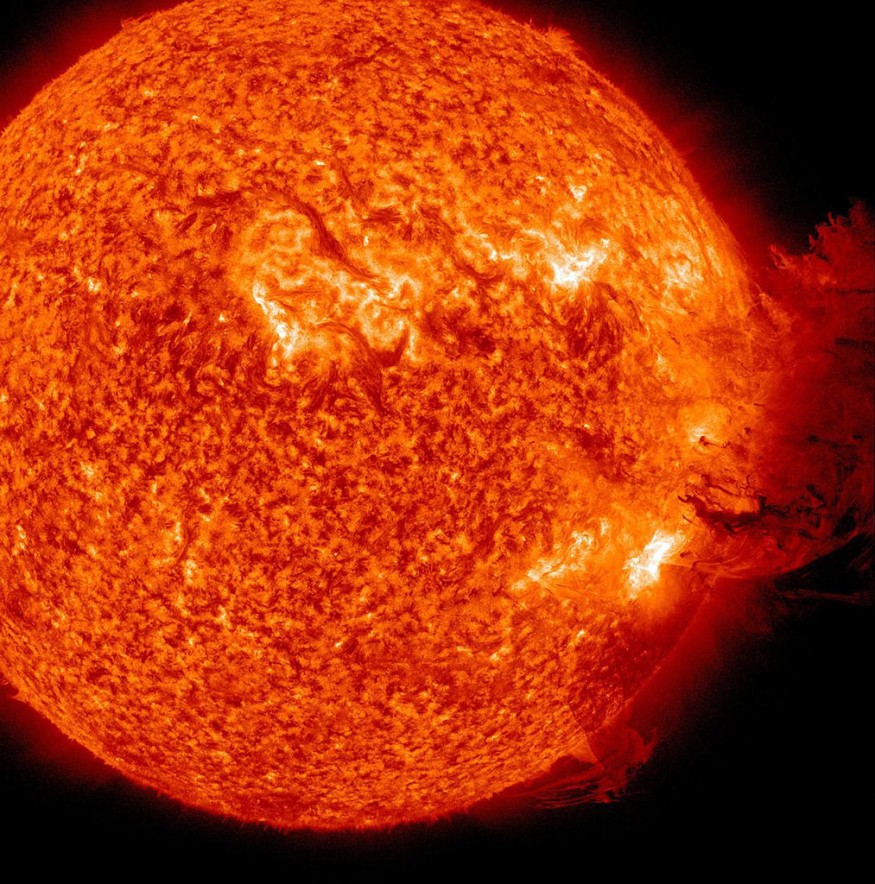A solar flare, which erupted from a sunspot in recent days struck Earth and caused radio blackouts in Australia and New Zealand, according to reports on Tuesday, November 8.
The geomagnetic storm from the flare apparently disrupted our planet's radio signals and satellite communications, leading to the reported blackouts, which were not the first occurrence this year.
Reports described the flare as unexpected since it burst out without warning from one of the Sun's sunspots called AR3141, which came from dark regions of our solar system's only star filled with powerful magnetic fields.
Sunspots are also the regions of active solar storms, generating solar weather events like geomagnetic storms, radio blackouts, and solar radiation storms.
Solar Storm Alert

The solar flare from Sunspot AR3141 was an M5-class with medium intensity that erupted at 7:11 p.m. ET (local time) on Sunday, November 6, as recorded by the National Aeronautics and Space Administration (NASA) - Solar Dynamics Observatory.
It was only reported on Tuesday that the solar storm caused radio blackouts in Australia and New Zealand, where radio frequencies were likely temporarily disrupted.
In addition to the solar flare, the recent solar outburst was accompanied by a coronal mass ejection (CME), another type of solar storm, which missed Earth.
The blackouts in the said Oceania countries are likely to be followed by additional solar explosions in other parts of the world in the coming months and years under the current Solar Cycle 25.
Solar Flare and Coronal Mass Ejection
Solar flares are an intense burst of radiation due to the Sun's release of magnetic energy linked with sunspots, making the flares our solar system's largest explosive events, according to NASA TV.
In the 21st century, a powerful solar flare occurred in the 4th of November 2003, as part of the so-called "2003 Halloween solar storms" which started in mid-October that year.
The National Oceanic and Atmospheric Administration (NOAA) classifies these flares under a five-tier scale such as A, B, C, M, and X; where A being the weakest and X being the strongest of them all.
The measurement of their intensity is based on the x-rays they release, as cited by Live Science.
Meanwhile, CMEs are large emissions containing plasma and magnetic field from the Sun's corona, ejecting billions of tons of coronal material and carry an attached magnetic field that is stronger than the background solar wind called interplanetary magnetic field or IMF strength, according to the Space Weather Prediction Center (SWPC).
Solar Cycle 25
In 2020, an international group of experts called the Solar Cycle 25 Prediction Panel, spearheaded by NASA and the NOAA, that Solar Cycle 25 started its solar minimum in December 2019 and its solar maximum will occur by the year 2025.
During this period, solar activities may range from moderate to intense depending on the current phase of the solar cycle, which affects the frequency and intensity of solar storms.
© 2026 NatureWorldNews.com All rights reserved. Do not reproduce without permission.





